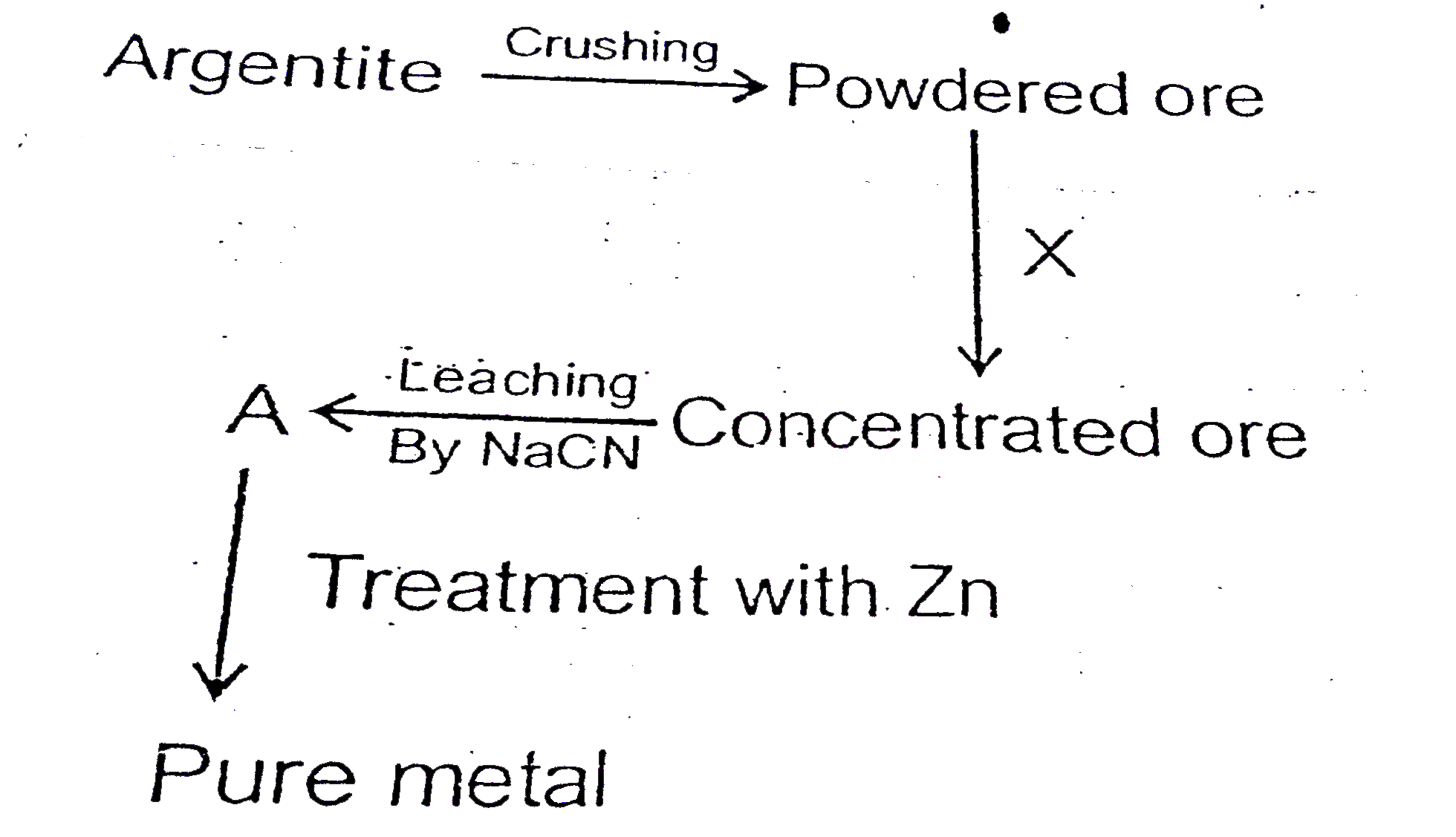An ore of tin containing is concentrated by _____.
gravity separation
magnetic separation
froth floatation
leaching
The correct Answer is:B
To solve the question regarding the concentration of an ore of tin containing FeCrO₄, we will analyze the options provided and determine the most appropriate method for concentration.
1. Understanding the Ore Composition:
- The ore in question contains FeCrO₄, which is known as chromite. It is important to note that FeCrO₄ has ferromagnetic properties.
2. Analyzing the Concentration Methods:
- Gravity Separation: This method is based on the difference in density between the ore and the gangue. It is typically used for denser ores but is not specifically effective for separating materials based on magnetic properties.
- Magnetic Separation: This method exploits the differences in magnetic properties of the components in the ore. Since FeCrO₄ is ferromagnetic and tin is non-magnetic, this method can effectively separate the two based on their magnetic characteristics.
- Froth Flotation: This process is used to separate hydrophobic materials from hydrophilic ones. It is not suitable for the concentration of FeCrO₄ in this context.
- Leaching: This chemical process involves dissolving the ore in a solution to separate the metal from impurities. While effective for some ores, it is not the primary method for concentrating ores with magnetic properties.
3. Conclusion:
- Given that FeCrO₄ is ferromagnetic and tin is non-magnetic, the most suitable method for concentrating the ore of tin containing FeCrO₄ is magnetic separation.
Final Answer:
The ore of tin containing FeCrO₄ is concentrated by magnetic separation.
---
- The ore in question contains FeCrO₄, which is known as chromite. It is important to note that FeCrO₄ has ferromagnetic properties.
- Gravity Separation: This method is based on the difference in density between the ore and the gangue. It is typically used for denser ores but is not specifically effective for separating materials based on magnetic properties.
- Magnetic Separation: This method exploits the differences in magnetic properties of the components in the ore. Since FeCrO₄ is ferromagnetic and tin is non-magnetic, this method can effectively separate the two based on their magnetic characteristics.
- Froth Flotation: This process is used to separate hydrophobic materials from hydrophilic ones. It is not suitable for the concentration of FeCrO₄ in this context.
- Leaching: This chemical process involves dissolving the ore in a solution to separate the metal from impurities. While effective for some ores, it is not the primary method for concentrating ores with magnetic properties.
- Given that FeCrO₄ is ferromagnetic and tin is non-magnetic, the most suitable method for concentrating the ore of tin containing FeCrO₄ is magnetic separation.
The ore of tin containing FeCrO₄ is concentrated by magnetic separation.
Topper's Solved these Questions
- BOOK - NCERT FINGERTPS ENGLISHCHAPTER - GENERAL PRINCIPLES AND PROCESSES OF ISOLATION OF ELEMENTSEXERCISE - HOTS7videos
GENERAL PRINCIPLES AND PROCESSES OF ISOLATION OF ELEMENTS
- BOOK - NCERT FINGERTPS ENGLISHCHAPTER - GENERAL PRINCIPLES AND PROCESSES OF ISOLATION OF ELEMENTSEXERCISE - NCERT EXEMPLAR PROBLEMS13videos
GENERAL PRINCIPLES AND PROCESSES OF ISOLATION OF ELEMENTS
- BOOK - NCERT FINGERTPS ENGLISHCHAPTER - ELECTROCHEMISTRYEXERCISE - Assertion And Reason15videos
ELECTROCHEMISTRY
- BOOK - NCERT FINGERTPS ENGLISHCHAPTER - HALOALKANES AND HALOARENESEXERCISE - NCERT Exemplar27videos
HALOALKANES AND HALOARENES
Similar Questions
Knowledge Check
- Question 1 - Select One
Sulphide ore of copper can be concentrated by
A(A)Forth flotation processB(B)electromagnetic processC(C)gravity separationD(D)distillation
An ore which does not contain oxygen is
View SolutionName the
An ore of zinc containing its sulphide.View SolutionWhich one of the following sulphide ores is concentrated by chemical leaching ?
View SolutionWhich one of the following ores is best concentrated by froth flotation method:
View SolutionWhich of the ores mentioned in table in Table can be concentrated by magnetic separation method?
View SolutionWhich of the following statements is/are incorrect?
(a) Cassiterite is not the ore of tin
(b) Metallurgy is a process of mixing of ore
(c) concentration of chromite (FeO.Cr2O3) is done by magnetic separation
(d) ZnS with depressant NaCN forms Na2[Zn(CN)4]View SolutionSulphide ore is concentrated by which method?
View Solution


